HOW TO THINK AND ACT AS A MASTER
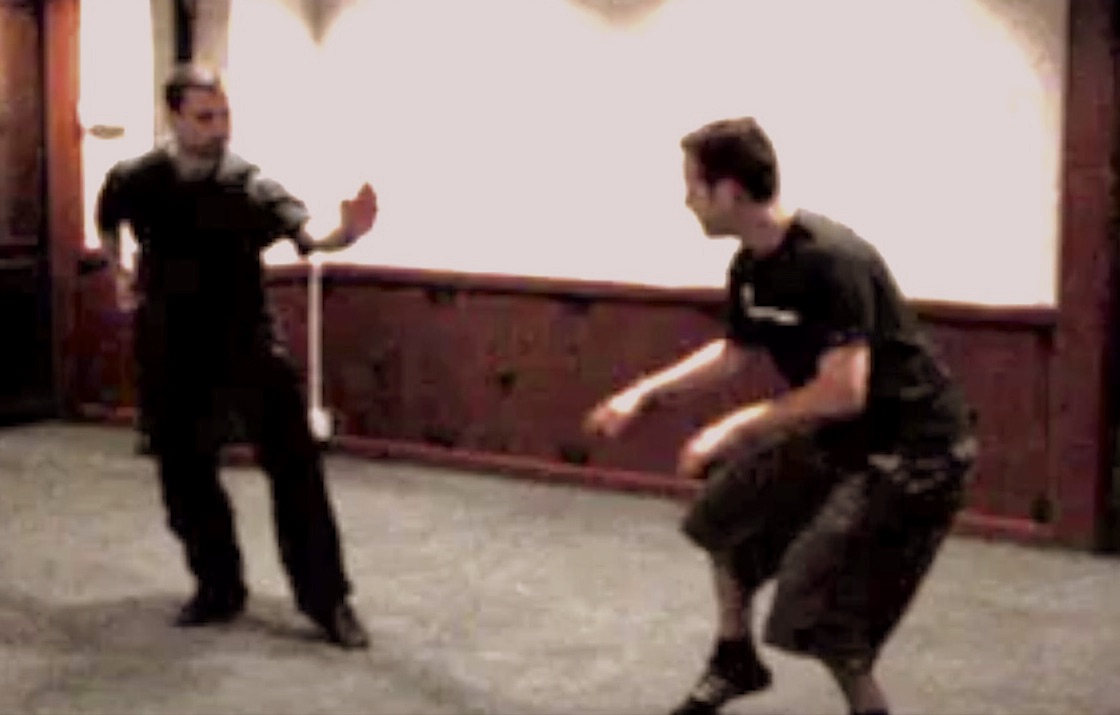
Sifu Charles and Sifu Roland enjoying combat application
The main aim of the course is to train participants to think and act as a Shaolin master. The course includes a quick review of our basic Shaolin Kungfu training programme, to apply techniques from their specialized sets for sparring or real fighting, and to have a deeper understanding of combat application so that they may be able to apply any martial art patterns in combat.
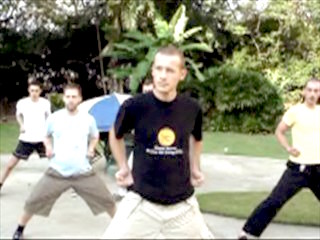
Many kungfu practitioners say that the basics are very important. By "basics" many of them mean kungfu forms. To us in Shaolin Wahnam, the basics go beyond kungfu forms. The basics are what kungfu forms as well as combat application and force training are built upon. They include stances, footwork, body movement, being relaxed, flexibility, balance, breathing methods as well as generating energy flow, exploding force and entering Zen. This video series record some of the important lessons on the basics.
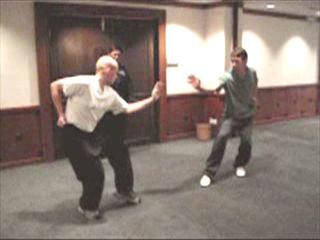
2. Form, Force, Flow and Element of Threat
An important aim of this Special Shaolin Kungfu Course is to enable participants use techniques from their specialized sets in free sparring and real fighting. An excellent way to accomplish this is to progress from the sixteen Basic Combat Sequences. This video series reviews the lessons on applying the first four sequences to consolidate picture-perfect form, internal force, fluidity of movements and an element of threat in combat.
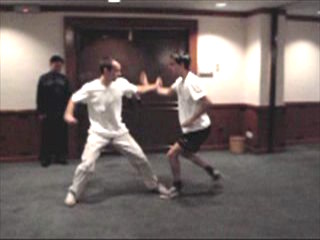
3. Review the Basic Combat Sequences
Two important ingredients for combat efficiency are techniques and skills. You need the best forms for the combat situations, and the best ways to put them into action. Our Combat Sequences 1 to 4 focus on basic combat skills, whereas Combat Sequences 5 to 16 provide the basic techniques to meet all categories of attacks. The four basic combat sequences also illustrate some effective tactics, and by combining the sequences in various ways they lay the foundation for devising various strategies for combat
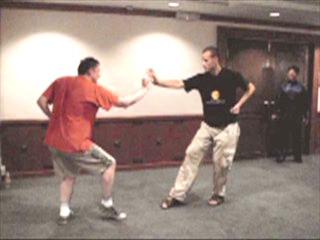
4. Devising Strategies Using Combat Sequences
If you plan your attack beforehand and use it spontaneously in combat, you have a far better chance of defeating your opponent than just fighting him on the spot in an impromptu manner. This is the use of strategies. Some simple strategies can be devised by combining combat sequences in various modes in both attacks and responses. This video series records a quick review of these strategies by participants at this course.
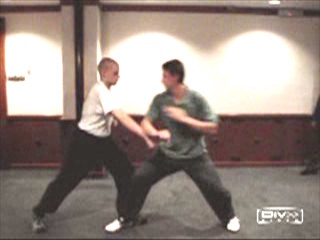
5. Applying Strategies forEffective Combat
Most people today fight haphazardly, i.e. their attacks or defences are impromptu and isolated. A systematically trained Shaolin practitioner does not fight in this haphazard way. He employs techniques appropriate for the combat situations. Then he seeks or works out advantageous ways in his attack and defence using tactics and strategies. Some simple strategies in attack and defence are shown in these video clips. They involve various modes of applying combat sequences.
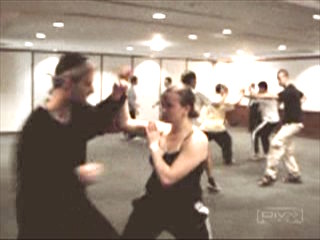
6. Free Sparring with Prescribed Conditions
Most kungfu practitioners today are unable to use kungfu patterns in free sparring, not because kungfu is not combat effective, but because they have not been systematically trained to do so. If we undergo systematic training in kungfu combat, we will find it more effective than using other martial techniques. The sparring shown here is not totally free because the combatants have to abide by certain conditions. On the other hand, the sparring is free because it is not pre-arranged.
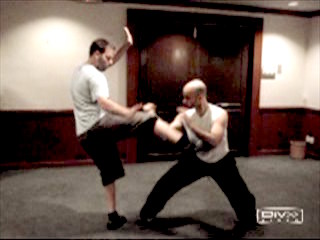
7. Combat Sequences to Train Spontaneous Attacks and Responses
Combat sequences play a crucial role in our sparring methodology. Combat sequences are pre-arranged; attacks and responses follow in a fixed order. Some people may wonder how training in combat sequences can lead to proficiency in free sparring and real fighting when these occur without any fixed sequence. They fail to understand that a primary aim in combat sequences is to train correct and spontaneous attacks and responses in a cost-effective manner.
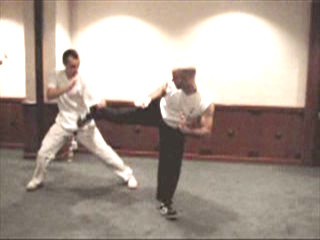
8. Using Strategies in Attack and Defence
Many people fight randomly, often without techniques. If you use appropriate techniques in your sparring and fighting, you have a big advantage over your opponents who don't. We move higher to strategies and tactics. If you use pre-planned combat sequences in appropriate combinations in your attack and defence, you use strategies. If in individual combat situations you maneuver your opponents into unfavorable conditions, you use tactics.
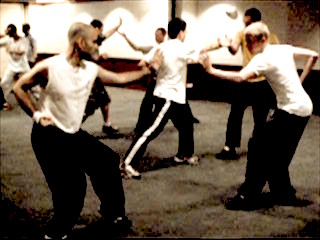
9. It is Heartening to See so Many People Using Kungfu in Free Sparring
A few people have expressed how heartening to see so many of our Shaolin Wahnam Family members use typical Shaolin and Taijiquan patterns in free sparring. The sparring shown in the videos below, however, is not totally free. The combatants are asked to use Sequences 1 to 12 as their base, which means they cannot use felling and gripping techniques which are found in later combat sequences.
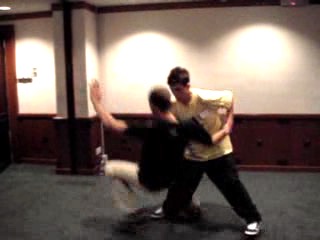
10. Felling and Gripping Techniques in Shaolin Kungfu
There are more throws in Shaolin Kungfu than in arts well known for throws like Judo and Wrestling. Throws are only one of many techniques to fell an opponent. On the other hand, felling techniques often incorporate gripping attacks too. In Shaolin Kungfu, which is practiced for real fighting, it is very important to ensure you are safe before you attempt to throw your opponents. This video series show four combat sequences where felling and gripping attacks are used.
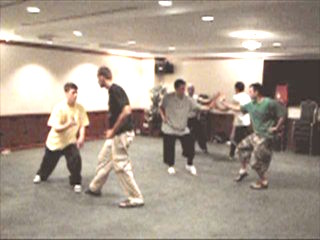
11. How Sequence Training and Chi Flow Enhance Combat Efficiency
There are two major problems many kungfu practitioners face when they wish to use kungfu in free sparring. After making an attack with a kungfu pattern, they hesitate in their next move because they do not know what kungfu pattern to use next When an opponent attacks, they do not know which kungfu pattern to use as a spontaneous response. Combat sequence training effectively overcomes these two problems. Besides giving us good health and vitality, chi flow enhances our combat efficiency in many ways.
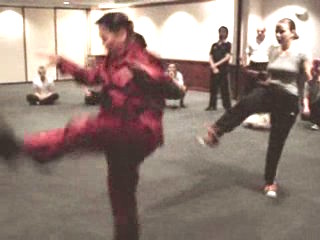
12. The Tiger-Crane Set -- Manifesting the Hard and the Soft in Shaolin Kungfu
The Tiger-Crane Set is the legacy of Uncle Righteousness. This set, which has only 36 patterns, is different from the Tiger-Crane Set of Grandmaster Lam Sai Weng which has 108 patterns. The Tiger-Crane Set manifests the "hard" and "soft" of Shaolin Kungfu. "Hard" and "soft", however, are relative and complementary.
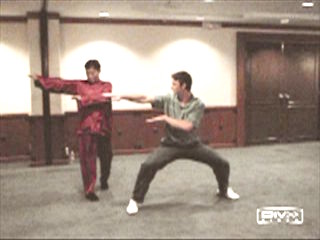
13. The Dragon-Tiger Set -- Crystallization of Two Wahnam Traditions
Our Shaolin Kungfu comes from two main lineages, that of Grandmaster Lai Chin Wah who was more widely known as Uncle Righteousness, and that of Grandmaster Ho Fatt Nam. Hence, our name "Wahnam". Uncle Righteousness was well known for the beauty and variety of kungfu forms; Grandmaster Ho Fatt Nam for combat application. Both of them were great fighters. Grandmaster Wong combined the essence of Uncle Righteousness' forms with the combat application of Grandmaster Ho Fatt Nam, resulting in the Dragon-Tiger Set.

14. The Dragon-Form Set -- Demonstrating that Softness Can be Very Powerful
Many people think that it is necessary to be hard to be powerful. This is not necessarily so. The Dragon Form Set manifests much internal force yet it is soft and flowing. This set was taught to Grandmaster Wong in his young days by his siheng, Por Lok, in Grandmaster Ho Fatt Nam's lineage in exchange for the Tiger-Crane Set. His siheng learned this Dragon Form Set from another teacher. The patterns are simple, but the application profound.
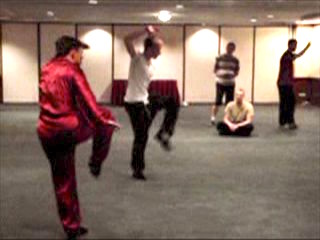
15. Shaolin Monkey Set -- Symbolizing Spiritual Path from Cheekiness to Enlightenment
Not many people may know that the specialty of Grandmaster Ho Fatt Nam, one of the two Patriarchs of our school, is the Shaolin Monkey Set. This set symbolizes the spiritual path of the Monkey God, the Great Sage Equal to Heaven, who has special significance in Grandmaster Ho Fatt Nam's lineage. This set is extremely effective for combat as well as for developing qualities like agility, fluid movement and mental freshness that are very useful for daily purposes.
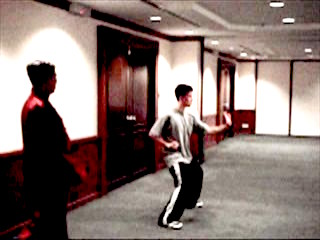
15. Shaolin Monkey Set -- Gist of Shaolin Forms and Essence
Of all the martial arts in the world, Shaolin Kungfu has the most extensive range of techniques. While there are also techniques that fall outside the "Five Animals", the "Five Animals" represent the gist of Shaolin techniques. The "Five Animals" are Dragon, Snake, Tiger, Leopard and Crane. The Dragon trains Spirit, the Snake trains Energy, the Tiger trains Bones, the Leopard trains Strength, and the Crane trains Essence.
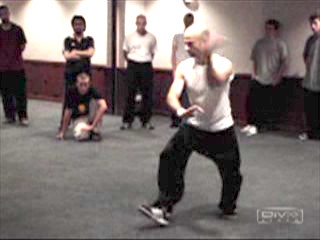
17. Shaolin Pakua Set -- An Exclusive Set Fit for Kings and Generals
The Shaolin Pakua Set has special significance for Grandmaster Wong. It opened for him the wonders of Shaolin combat application. This Shaolin Pakua Set is relatively unknown. This is logical, as it is an exclusive set. It was the set Grandmaster Ho Fatt Nam chose when he taught a Sultan or King.
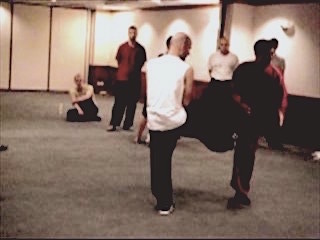
18. Combat Application of Pakua Set -- Sharing Secrets for Combat Efficieny
Grandmaster Wong is able to explain the combat application of any kungfu patterns even when he sees them the first time. This is mainly due to his "kungfu enlightenment" after learning the Shaolin Pakua Set from Grandmaster Ho Fatt Nam. In this course Grandmaster Wong taught this ability to course participants.
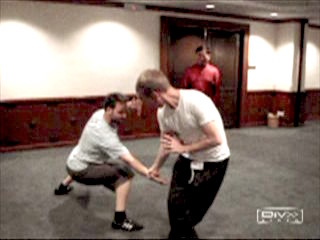
19. Beginning to Learn some Monkey Tricks
An excellent way to start formulating your own combat sequences from your specialized set is to use our 16 basic combat sequences as a base from where you substitute your more sophisticated patterns from your specialized set. The video series here shows the Monkey specialists working out their combat sequences starting from the most basic level. They start to learn some interesting Monkey tricks.
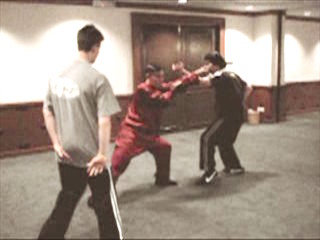
20. Refining Techniques in Combat
Combat sequences form an essential aspect of our sparring methodology. Our 16 basic combat sequences will enable us to handle any combat situation. We can improve the efficiency and sophistication of our combat by applying patterns from our specialized sets.
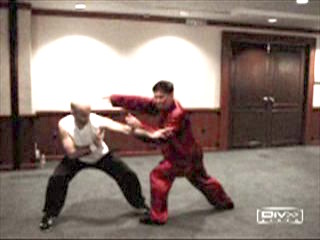
21. Some Examples of High Level Combat
How would you raise the level of your combat efficiency? Four effective ways are shown in this video series: by raising the level of techniques, by raising the level of tactics, by raising the level of skills, by raising the sophistication of footwork.
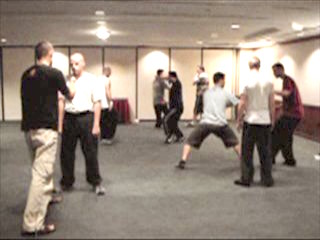
22. Collective Effort for Greater Benefits
The working out of the specialized combat sequences is a collective effort where everyone contributes to and benefits from, with Grandmaster Wong giving advice and guidance. It is an enriching experience where participants can maximize one another's expertise as well as learn from others' mistakes.
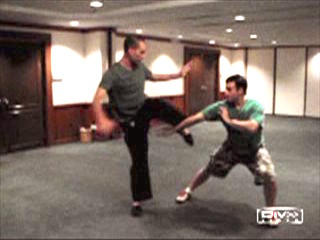
23. Can Sophisticated Kungfu Techniques be used in Combat?
The attacks and counters of the Tiger-Crane combat sequence shown in this video series are sophisticated. Many martial artists may say that these sophisticated techniques are unrealistic, and cannot be used in real fights. This is no surprise. These same people do not even believe that simple kungfu techniques can be used in combat.
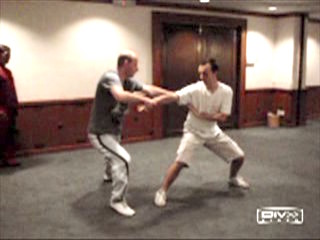
24. Skills are usually More Important than Techniques
Every master knows the counter of any attack. If he is defeated, it is not due to his ignorance of the counter but due to his insufficient skill to apply it successfully. In combat, skills are usually more important than techniques. The video series below, which shows a combat application of the Dragon-Tiger Set, captures some of these lessons on skills and techniques.
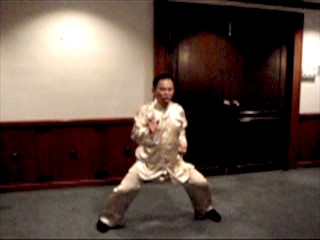
25. One-Finger Shooting Zen -- the Treasure of Shaolin Wahnam
Grandmaster Ho Fatt Nam, the third generation-successor from the southern Shaolin Temple, said to Grandmaster Wong: "Many people say that they learn kungfu, but what they actually learn is just quan-fa. Now you learn two of the best kungfu in Shaolin, namely One-Finger Zen and Tiger Claw."
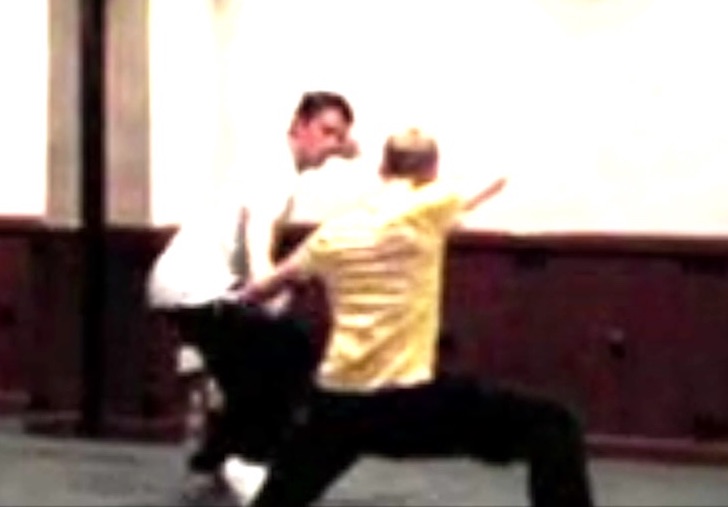
26. Raising Levels of Techniques and Tactics in Combat
One way to raise our level of combat efficiency is to have more sophisticated techniques in both attack and defence. We can also bring to a higher level the way we use our techniques. We can also trick our opponent with a bait. We may initiate a simple attack like a Black Tiger, and when he responds we can surprise him with a planned counter. Or we may purposely give him an opening to attack, and defeat him as he falls into our trap.
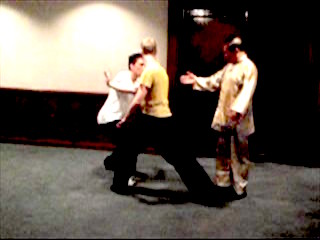
27. Bringing Combat Skills to More Sophisticated Levels
Having raised our levels of techniques and tactics, we can raise our skill level. The same technique or tactic performed at different skill levels can have vastly different results. In our 16 basic combat sequences, we place much importance to spacing and timing. Here in the special combat sequences, we bring spacing and timing to more sophisticated levels.
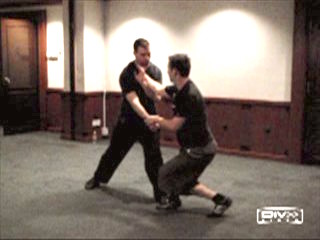
28. Monkey Techniques are Flowing and Agile but can be Very Devastating
The Shaolin Monkey Set is flowing and graceful, and does not rely on muscular strength. A Monkey stylist uses internal force. In fact, Monkey techniques are well known to be effective for small sized practitioners against bigger sized opponents. Nevertheless, the Shaolin Monkey Set, especially with its "gorilla patterns", is also combat effective for big sized persons.

29. Flowing with the Opponent's Momentum
If an opponent has succeeded in gripping your throat, how would you release it? Don't push away his hand or pull away your head, because these movements may cause his grip to tear away your trachea. You should also guard his gripping hand to prevent him from suddenly releasing the grip to attack your eyes.
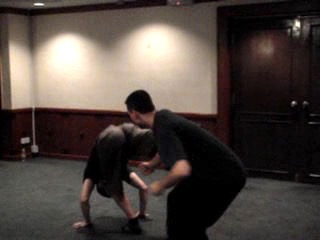
Monkey Kungfu is full of tricks. The tricks are not noticeable to most people, otherwise they would not be tricks. A skillful Monkey stylist would trick you to attack. When you think you are gaining the upper-hand, he suddenly defeats you in surprise. This and other video series on the Shaolin Monkey Set provide some interesting examples of Monkey tricks.
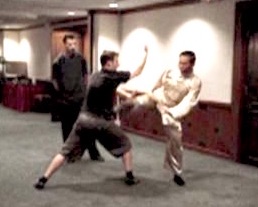
31. Marvelous Techniques Beget Marvelous Techniques
When you think you have defeated a Shaolin master with a marvelous technique, all of a sudden you find yourself marvelously defeated. This is marvelous techniques beget marvelous techniques. You have dedicated yourself to develop a kungfu skill that gives you wondrous results. Then you discover that this leads to other skills that give even more wondrous results. This is wondrous skills generate wondrous skills.
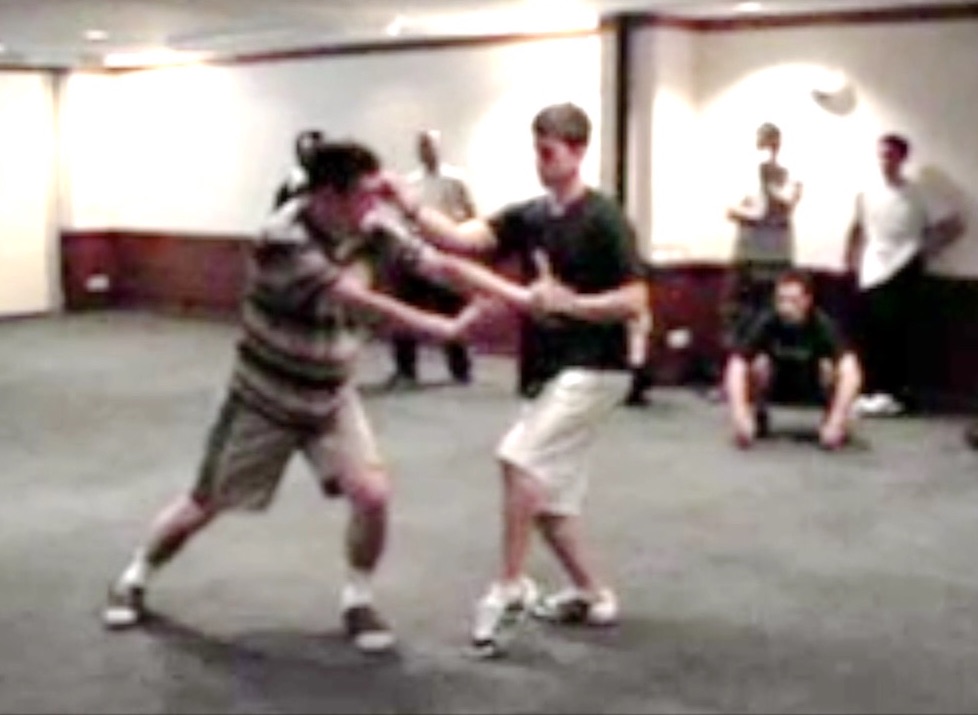
32. How to Raise your Combat to Higher Levels
How would you raise your level of combat? The video clips here show how you can do so in at least three ways. Firstly, you can use more sophisticated techniques for attack as well as defence. Secondly you can use higher level tactics. Thirdly, you can raise your combat level by enhancing your footwork.

33. How you can Defeat your Opponent
If your opponent fights haphazardly but you use basic kungfu techniques, you are one level higher than him in combat efficiency. If he also uses basic techniques, you can improve your techniques, using sophisticated instead of basic ones. Besides improving your techniques, you should also enhance your tactics and skills.
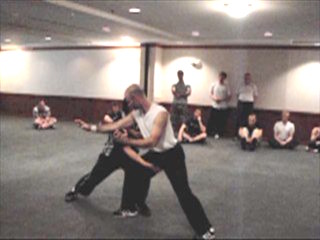
34. Employing Sophisticated Kungfu Techniques
Kungfu has been debased to such a shocking state today that many kungfu practitioners think that kungfu techniques cannot be used for fighting! Of course, kungfu techniques can be used for fighting. In this course we use techniques from selected kungfu sets, which are more sophisticated than those of the basic combat sequences, to enhance our combat efficiency level.
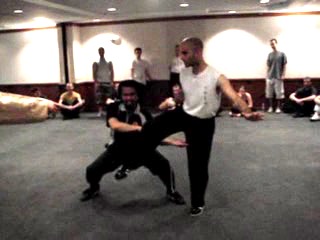
35. Systematic Training is Essential for Combat Efficiency
Why is it that many kungfu practitioners find it hard to use kungfu in combat? It is because kungfu fighting is not natural, it is an art. If someone attacks you it is easier for you, if you had not been systematically trained in kungfu combat application, to response instinctively than using kungfu forms. To be proficient in kungfu combat requires not only time and effort but more significantly systematic training.
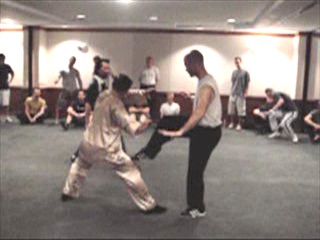
36. Raising Combat Efficiency from Basic to Advanced Levels
In this Special Shaolin Kungfu Course we raise our combat efficiency to higher levels not just by using more sophisticated techniques from our selected kungfu sets but also by enhancing our skills. For example, by purposely slowing down our speed while we defend, we trick an opponent to slow down his momentum too. Then we suddenly speed up our counter-attack, we can catch him in surprise.
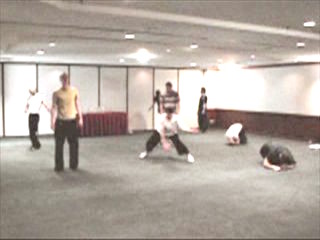
37. Kungfu Philosophy and Swaying Willows
Philosophy is an aspect of kungfu training that has been much neglected. Amongst the most important benefits, understanding kungfu philosophy shows us what our goals are and enables us to be cost-effective in our training. Another aspect that most kungfu practitioners have missed today is chi flow, poetically described in Shaolin Kungfu as "flowing breeze swaying willows".
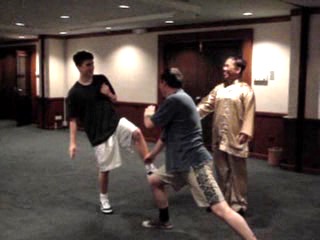
38. Hands Pave the Way, Kicks to Clinch Victory
Some people mistakenly think that kicks are uncommon or unimportant in kungfu. Its importance can been seen in the kungfu saying, "hands are like two doors to open the way, it is kicks that hit opponents". There are more kicks in Shaolin Kungfu than all the kicks in other martial arts put together! This combat sequence of the Five-Animal Set, a representative set of Shaolin Kungfu, gives some examples not only of kicks, but how to open the doors with the hands to pave the way for kicks.

39. Six Harmonies in Double Tiger Claws
The Five-Animal Set introduces the famous Shaolin Tiger Claws. Important factors for its successful application include appropriate body-movement, good footwork and pressing hand techniques. Together with essence, mind and energy, they constitue the six harmonies that are very important in Shaolin Kungfu.
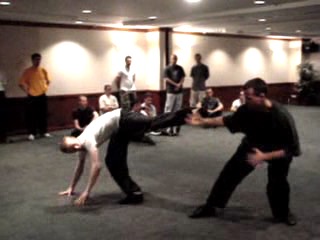
40. The Amazement and Effectiveness of Monkey Kicks
Monkey Kungfu is well known for kicks. Monkey kicks are inconspicuous, generally low, and are tricky. A Monkey stylist uses his hand techniques to pave the way for his kicks. Often his hand movements camouflage his kicking techniques.
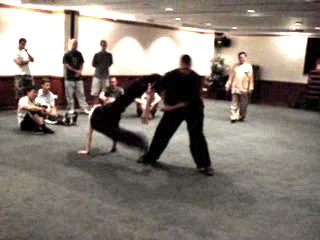
41. A Bag Full of Monkey Tricks
The Monkey is known for tricks. He may pretend to attack your face, then kicks your groin. He may run away, then surprise you with a monkey-tail kick.

42. Gentle and Flowing, yet Very Powerful
Dragon Style is noted for its flowing movements. The Dragon movements are gentle and graceful but powerful. The uninitiated may find it hard to comprehend. How can one be gentle and graceful, yet powerful? The answer lies in chi flow and internal force.
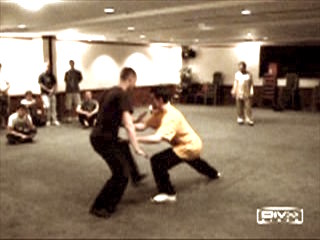
43. Can your Responses still be Correct and Spontaneous in Real Fights?
A legitimate question many people ask is whether fixed routine of combat sequences can be useful in real fighting where combatants do not follow any fixed order in their attack and defence. Of course the answer is yes, which most of you have discovered from your own direct experience. It is worthy of note that we have the experience first, then we find the answer from our experience. This was actually how Shaolin philosophy developed.
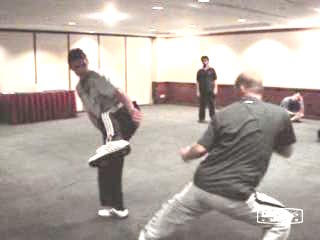
44. Incorporating Kicks into Combat Sequences
Kicks are very important in kungfu. There is a kungfu saying that the hands open the way, it is the legs that defeat opponents. This and subsequent series capture the lessons course participants formulate combat sequences where kicks are incorporated.

45. Elaborate Patterns to Meet Complex Combat Situations
Many kungfu practitioners do not believe that elaborate kungfu patterns can be used for fighting. Indeed, in the 1970s when Karate and later Taekwondo became popular, some traditional kungfu masters attempted to simplify kungfu, doing away with elaborate forms like Tiger-Claws and Dragon-Hands, and emphasizing straight-forward blocks and punches. Elaborate kungfu forms were not invented. They evolved naturally from simpler forms as combat situations became more complex.
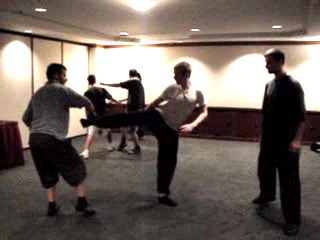
46. The Benefits of Understanding and Applying Kungfu Philosophy
Most kungfu practitioners today neglect philosophy. This is one main reason they do not derive as much benefit as they should given the time and effort they have spent. This and the following video series show course participants discussing kungfu philosophy in relation to the combat sequences that they formulate. Kungfu philosophy should serve us, not enslave us. The onus of kungfu philosophy is practical benefit, for combat as well as daily living, not merely intellectual pleasure.
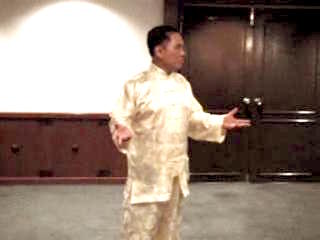
47. Our Kungfu is a Training of Energy and Mind
Why is it that we can develop internal force and mental clarity by practicing our kungfu? A short, simple answer is that our kungfu is also chi kung and meditation. That explains why we can develop a lot of internal force and mental clarity by practicing zhan zhuang, or stance training. It also explains why we can spar for many hours yet are not tired, and why we experience spiritual expansion.
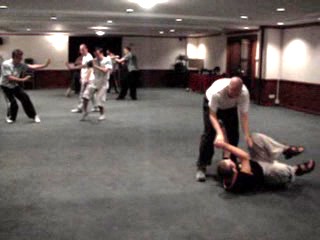
48. Ensuring Own Safety when Felling Opponents
Shaolin Kungfu is very rich in felling techniques. Because Shaolin Kungfu is a martial art not protected by safety rules, much importance is paid to ensuring one's own safety before attempting to throw an opponent. After felling an opponent onto the ground, you must also ensure that your opponent has little or no opportunity to strike your vital spots.
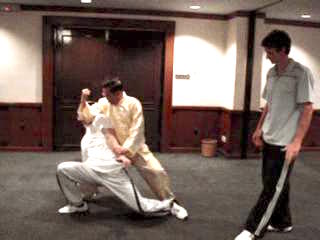
49. The Beauty and Profundity of Shaolin Felling Techniques
In many other martial arts, if your opponent is bigger and stronger, you will have little chance of felling him. But not in Shaolin Kungfu. You will learn the secret in this video series. You will learn how to use patterns that are not normally associated with felling, to fell your opponents. You will also learn an interesting technique. You can use the same pattern your opponent uses to fell you, to fell your opponent instead!

50. Felling Techniques of the Dragon and the Monkey
A helpful method to formulate your own combat sequences is to use our basic sequences as bases. You can then substitute some patterns from the basic sequences with patterns from your specialized set. Normally a solid stance, like the Horse-Riding Stance, is used to execute throws. But in the Monkey sequences, the agile False-Leg Stance is used, demonstrating that a Monkey stylist can be agile and solid at the same time.
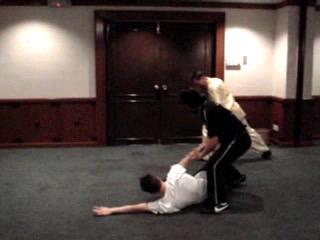
51. Felling an Opponent Without him Realizing what has Happened
Two felling techniques are demonstrated in this video series, namely "leg-drag" and "leading". Other felling techniques, like "sweeping", "sinking elbow" and "pulling back", are demonstrated in earlier series. The "leg-drag" is interesting. You fell an opponent without him knowing what has happened.
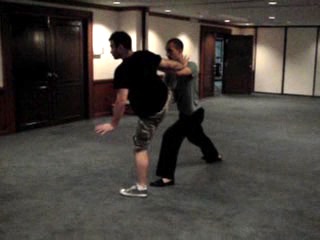
52. Pattern Analysis of the Tiger-Crane Set
As experienced fighters used more advanced movements, simple techniques gradually became more sophisticated. These fighting movements were stylized into kungfu patterns over many centuries. Due to various factors, different combatants preferred some patterns over others. The various special sets in this course represent the crystallization of these various preferred ways of fighting.
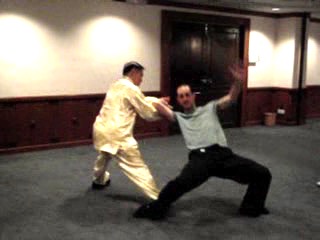
53. Tiger Patterns for Chin-Na, Against Kicks and Countering the Shoot
Chin-na is a compassionate way of combat. It puts an opponent out of action without seriously injuring him, and allows him to recover if he seeks remedy from a master or Chinese physician. The Tiger patterns from the Tiger-Crane Set are demonstrated in this video series as chin-na techniques. "Tame Tiger with String of Beads" can also be employed against any kicks. When an opponent attacks you with a "shoot", you can stop him with "Yun Tan Tames Tiger".
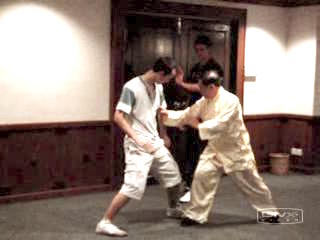
54. Pattern Analysis of the Dragon-Tiger Set
The Tiger-Claw is an integral aspect of the Dragon-Tiger Set. Tiger-Claws are excellent for chin-na. Dragon patterns are deceptively soft. In the hands of a practitioner with internal force, strikes from the Dragon-Hand which usually aims at vital points, can cause serious internal damage without leaving external marks.
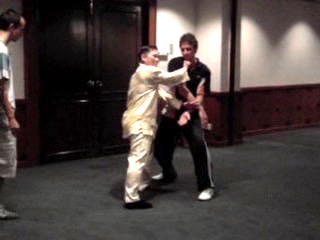
55. Revealing the Secret Tactic of Leak Hand
"Leak Hand" is one of the many important concepts in Shaolin that is sometimes mentioned but little understood. It is found in many of the kungfu sets in Uncle Righteousness lineage. However, its application was taught only to selected disciples. In an unprecedented manner, Grandmaster Wong reveals its secret openly here. An important reason for letting out this secret is that Grandmaster Wong does not want the secret to be lost.
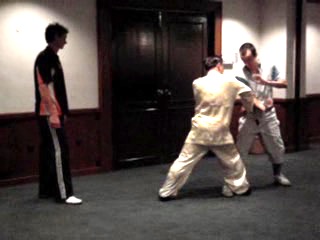
56. From the Level of Techniques to the Levels of Tactics and Strategies
In many ways kungfu combat is like playing chess. At the basic level, when your opponent makes a good move, you counter with a better move. At a higher level, you frustrate your opponent's intention even before he makes his planned moves. Or you allow him to make his planned moves but overcome him as he does so. Two secret tactics are revealed here, "lead hand" and "false-false, real-real".
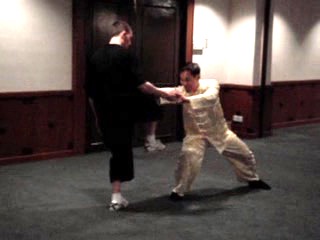
57. Pattern Analysis of the Dragon-Form Set
Dragon patterns are graceful and flowing. If other martial artists criticize us saying that our kungfu is too graceful and flowing to be effective for combat, we should feel complimented rather than angry. It was a fact that great masters in the past were graceful and flowing, yet very powerful and combat efficient, and we are blessed to have similar attainment.

58. Effective Techniques for Fighting on the Ground
The Dragon stylist is not only graceful and flowing but also agile. The pattern "Move Body Little Jump" is effective for training agility. A good way to land when jumping away is to use the pattern "Submerged Dragon Subdues Sea Monster". You may then rise to attack with "Comet Chases away Moon". If you wish to remain on the ground for some reasons, "Old Dragon Squats on Ground" enables you to be safe from any attacks.
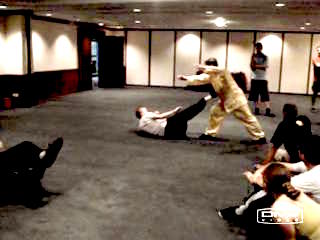
59. Pattern Analysis of the Monkey Set
Even in the apparently simple movement of rolling out at the start of the set, many tricks are embedded in it. Why does a Monkey "wash" his head or body? Of course, it is not just for show; these washing movements contain some effective combat functions.
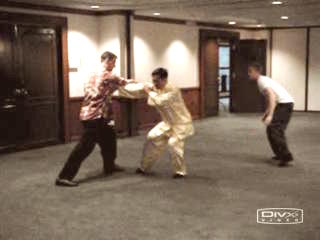
60. Soft Techniques and Internal Force in Monkey Kungfu
A Monkey stylist is usually small in size, and his movements are generally "soft". How would he overcome a bigger size opponent who is powerful? Monkey techniques are graceful and employ the tactic of using minimum force against maximum strength. Moreover, a Monkey stylist uses internal force, where size and muscular strength are not important. Indeed, being muscle-bound would be a disadvantage
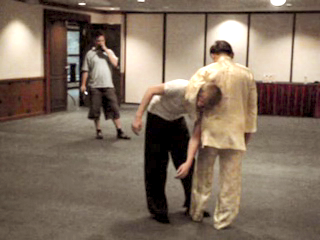
61. Interesting Monkey Patterns that are Deadly for Combat
The Monkey Set is also full of interesting patterns where their combat functions may not be obvious to the uninitiated. "Hiding Peaches under Armpit", for example, may be used to take your opponent for a walk without giving him an opportunity to strike you! When a Monkey stylist executes a pattern like "Happily Pluck Fruit", of course, he does not merely pluck fruit. He may pull of your ear or dislocate your neck. What do you think a Monkey stylist actually does when he catches fleas from his, or your, body?
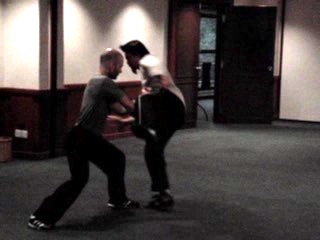
62. Pattern Analysis of the Pakua Set
The Pakua Set looks simple but is very sophisticated in combat applications. It is the set that enables Grandmaster Wong to be "enlightened" in using any kungfu patterns for combat. The starting pattern "Two Steps Pull Boat", for example, is simple looking but can be subtle in many combat functions. Grandmaster Wong also shows how you can use a series of typical Pakua patterns to attack an opponent almost irrespective of how he responds.
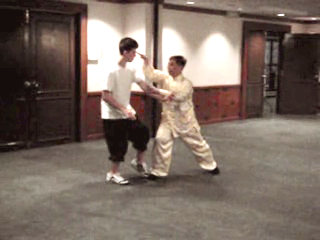
63. Pattern Analysis of the Five-Animal Set
The beginning patterns of the Five-Animal Set are meant to develop internal force. These patterns, of course, can also be used for combat. "Single Planting of Flowers" is a "close secret". Understandably it is not shown in the video clips here. But Grandmaster Wong reveals the "Secret of Continuous Snakes", which is a deadly attacking tactic. It requires much skill to execute this secret effectively.

64. Varieties of Techniques in Shaolin Five Animals
The Shaolin Five-Animal Set provides a great variety of techniques as well as different forms of internal force. The fast techniques of the Leopard, for example, are different from the graceful techniques of the Crane. The expansive force of the Dragon is different from the powerful force of the Tiger.
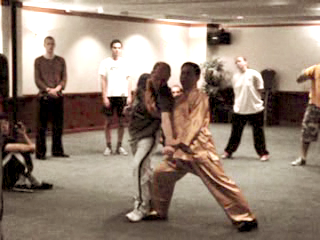
65. Investigating the Combat Applications of Some Patterns
The video series shows participants forwarding patterns that they are unsure of their combat functions. Three patterns are shown here: "Single Tiger Emerges from Cave", "Horse-Riding Hand Sweep" and "Lohan Emerges from Cave". The pattern "Single Tiger Emerges from Cave" shown here is from the classical Tiger-Crane Set of Uncle Righteousness' lineage. It is slightly different from the one we normally perform.
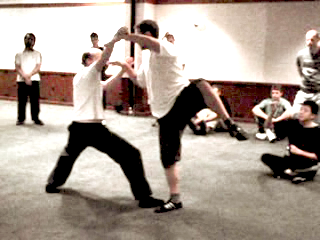
66. Similar Patterns but Different Applications
The patterns "Great Showing of Majesty" and "Great Sage Looks at Way" from the Monkey Set are similar in appearance. But do they have different combat applications? Nick and Sifu Rolland demonstrate some combat applications of these two patterns. You may, for example, use "Great Showing of Majesty" to strike an opponent as he kicks. Some interesting applications of "Great Sage Looks at Way" are demonstrated. You can prevent an opponent from moving away as you kick him.
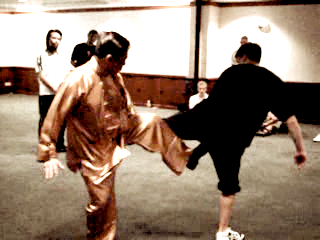
67. Effective Counters against Kicks, Grips and Knee Jabs
For many people, kicks are quite formidable. They are at a loss as what to do when opponents kick them. This video series shows a variety of counters against kicks, some of which are quite deadly. If you have practiced these counters well, as soon an opponent executes a kick, you can readily defeat him. There are also deadly techniques to grip an opponent's head, especially if he attempts to take you down with a shoot. You would also learn how to counter if an opponent grips your head or throw knee jabs at you.
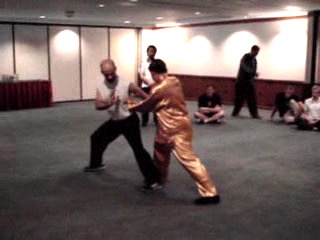
68. Secrets of Cannon Punch in Continuous Attack
Would you believe that by using just the pattern "Cannon Punch Towards Sky" you can continue to attack an opponent almost irrespective of how he responds? This video series will show you how. Of course, it is not merely the technique; you need considerable skills. The cannon punch here is known as "Skyward Cannon Punch". It is different from the horizontal cannon punch, which is also known as an arrow punch.
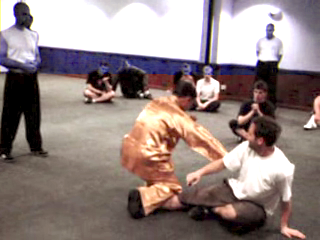
69. Cannon Punch Towards Sky and Fierce Tiger Crouching on Ground
A combination of "Cannon Punch Towwards Sky" with some fist techniques can make you into a formidable fighter -- even with gloves on. Those who only perform kungfu forms would be at a loss as what combat functions "Fierce Tiger Crouching on Ground" can have. Amongst many other applications, it can be used to break an opponent's arm or leg. You should know not only the combat applications of any patterns but also their counters.
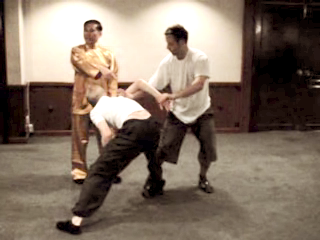
70. Flowing Monkey Techniques against Powerful Tiger Claws
If all things were equal, it would be difficult for a Monkey to fight against a Tiger, especially against the chin-na of the Tiger Claws. But of course things are not equal. There are various ways for a Monkey to counter the powerful grip of Tiger Claws. This video series shows some effective Monkey counters.
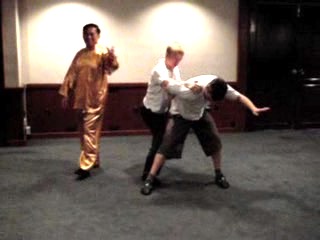
71. Sophisticated Grips and Sophisticated Counters
For most people, if they are held by a stronger opponent, it would be difficult for them to escape. A Monkey stylist, however, has effective ways to counter powerful grips. How does he do it? This video series reveals some of these secrets.
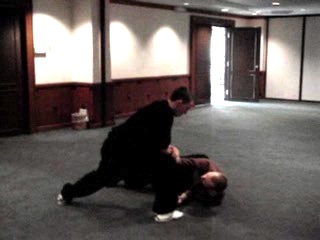
72. Breaking an Opponent's Elbow and Wrist
Two sohpisticated chin-na techniques are demonstrated in this video series, one to break an opponent's elbow, and the other to break his wrist. The patterns used are "Black Tiger Break Flank" and "Technique of Spiral Hand". Your opponents will find them difficult to escape from. It is important that you cover your own safety as you apply your chin-na or any techniques.
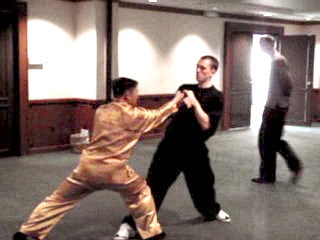
73. Neutralizing Wrist Lock and the Three Harmonies
"Spiral hand" is a formidable chin-na technique. You hold an opponent's hand in such a way that asserting just some pressure on his wrist will break it. How can you neutralize or counter this chin-na attack? There are a few effective ways, and "Swimming Dragon Plays with Water" is one of them. A successful application of this counter requires a good co-ordination of the three external harmonies, namely footwork, body-movement and hand technique.

74. Advanced Chin-Na Techniques and Counters
Chin-na or gripping is the most advanced of the four categories of attack. Basically there are two aspects in chin-na -- "chin" which is holding, and "na" which is gripping, i.e. gripping in such a way that even when the grip is released, the victim would be unable to continue fighting.
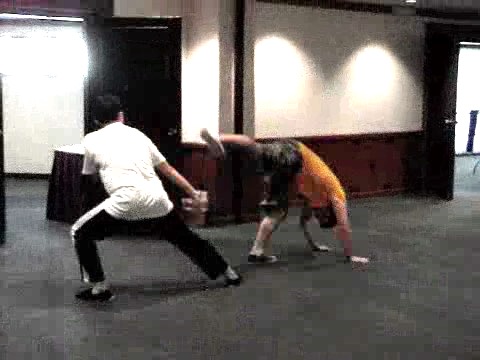
Grandmaster Wong learned an excellent counter from his sifu, Grandmaster Ho Fatt Nam, who taught him the pattern "Two Tigers Subdue Dragon". He also learned the counter. Later he used it so well that in his friendly sparring no one dared to execute side-kicks at him, as he would lock the opponents' kicking legs without fail. But before he had become skillful in its application, he tried it on his siheng, Ah Liang, in their free sparring. Ah Liang caught Grandmaster Wong's leg, and Grandmaster Wong attempted the counter. But Ah Liang responded with "Lead Horse Back to Stable" which resulted in Grandmaster Wong felling flat on his face covered with blood.
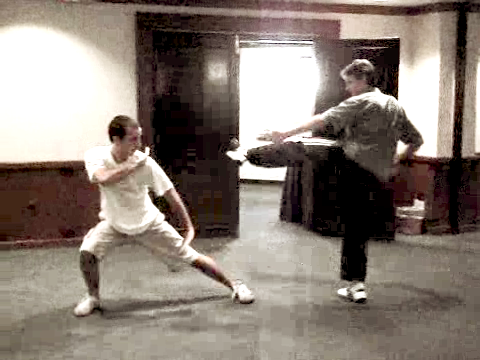
76. How to Respond to Attacks Spontaneously and Correctly
How would you train so that your responses in free sparring or real fighting are spontaneous and correct? Many people may be surprised to find out that an excellent way is to practice kungfu sets with sequences of combat applications! Participants at the Special Shaolin Kungfu Course did more. They composed their own sets from the combat applications they had worked out with their sparring partners. Such ttraining contributes much to their thinking and acting as Shaolin masters.
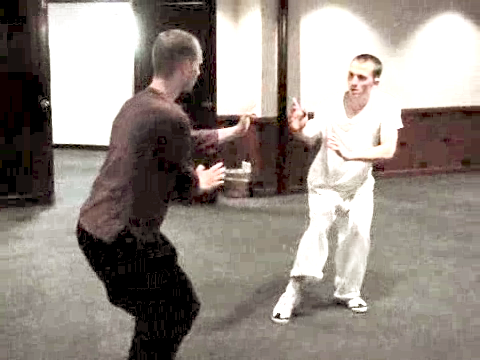
77. Can Beautiful Patterns and Flowing Movements be Effective for Combat
Some kungfu practitioners, due to their ignorance and sometimes arrogance, insist that kungfu patterns cannot be used for combat! They probably do not mean it, but they are insulting the past masters of their own lineage, implying they were fools or liars. They also imply that past masters who could seriously injure their opponents with apparently gentle movements without using brute strength were liars. Against such background, it is inspiring to see participants in the Special Shaolin Kungfu Course use graceful kungfu movements for combat.
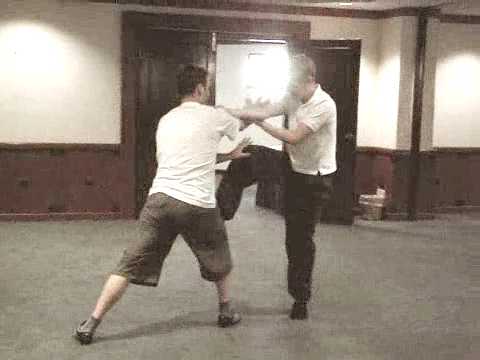
78. Linking Combat Sequences into a Set
This series first shows Sifu Roland demonstrating the combat sequences he and Nicholas Jones have devised, and linking them into a set. Then he and Nick demonstrate the application of these combat sequences in pre-arranged sparring. Next Nicholas Kryder demonstrates the combat sequences he and Chris have worked out together. He then links the combat sequences into a set. The application of these sequences are shown in the following series.
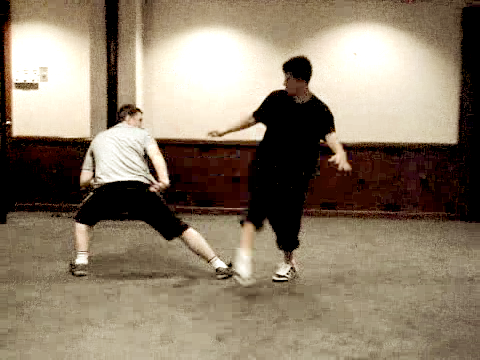
79. From Pre-Arranged Sparring to Combat Efficiency
Some people may wonder how one can be combat efficient if he practices pre-arranged sparring and not free sparring, when attacks in real fights come randomly. This mis-conception is common among many martial artists today, and is a main reason why they cannot apply the techniques they have learnt in solo practice for free sparring. Pre-arranged sparring is a first step. It is also a very important step where students condition themselves to use their kungfu techniques for free sparring later on.
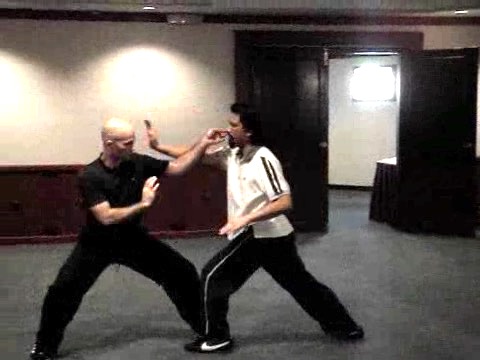
80. Crystalization of Combat Techniques of Past Masters
When you watch a classical kungfu set, you are watching the crystallization of some of the best combat movements masters used in the past in their real fighting. Most kungfu practitioners today may not realize this fact. In this series Sifu Anthony Korahais enacts this important fact, and demonstrates with Dr Damian Kissey some of the most beautiful attack and counter movements. The combat level shown here is high, and it needs much skill for its successful implementation.
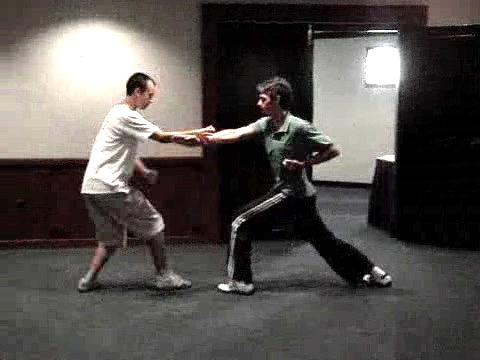
81. Hei Sai or the Spirit of Energy
What makes a master's performance stand out from that of ordinary practitioners? There are many factors, and an important one is known in Chinese as "hei sai" (or "qi shi" in Mandarin pronunciation), which may be roughly translated as "spirit of energy". A master and a student may perform the same forms, but the energy issuing from their performance is visibly different.
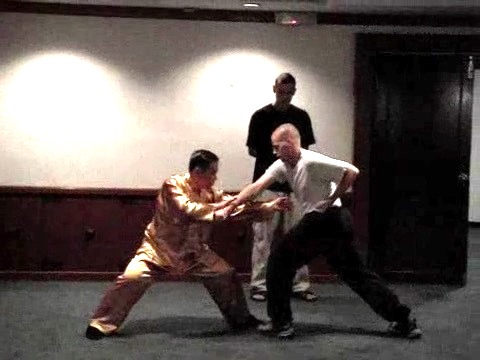
82. Manifesting the Energy and Spirit of your Form
Each form has its own characteristic energy and spirit. The Dragon forms are graceful and flowing, yet very powerful because the Dragon energy is diffused all over the body. The Dragon spirit is calm but penetrating. If you wish to bring your kungfu to another level, you should manifest the energy and spirit of your form.

83. Manifesting the Inner Essence of Your Form
What makes a master's performance stand out? There are many factors, but an important one is the spirit of the form. Students merely perform the form without the spirit, but a master manifests it. In other words, when students perform some Dragon patterns, they only show their outward forms. But when a master performs the same Dragon patterns, the spirit of the Dragon is perceptible.
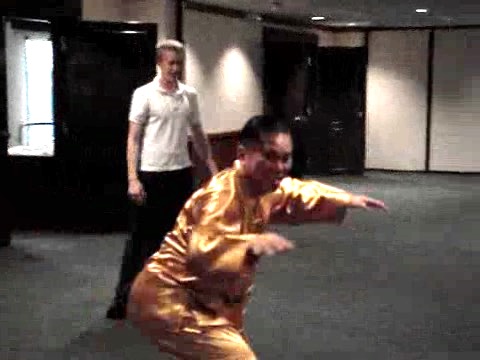
84. Kungfu Practice is not just Physical Training but also Spiritual Cultivation
The purpose of enhancing performance is not to please spectators, but to improve combat efficiency as well as enrich our daily living. Manifesting the spirit of the Dragon when performing Dragon forms, for example, improves our presence of mind. Manifesting the spirit of the Monkey enables us to be agile and cheerful. We nurture our spirit, besides developing our energy and body. Hence, practicing kungfu is not just physical training but also spiritual culitvation.
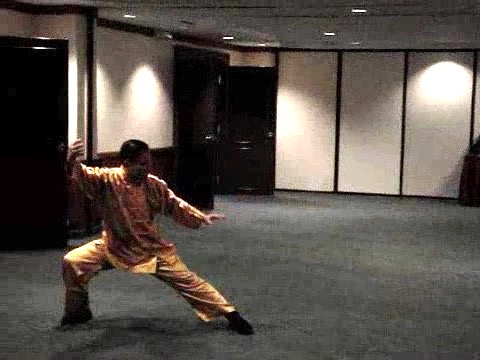
85. Fluidity of Form, Energy and Spirit
Another hallmark of a master is his fluidity -- not just of form but also of energy and spirit. As a result he is flexible in his movements, has good control of force applied, and his mind pervades at all places. This brings the participants' attainment to a much higher level
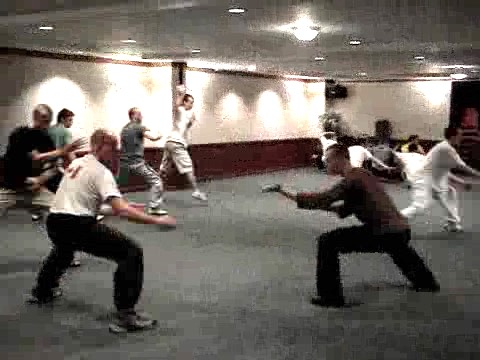
86. Shaolin Kungfu is Chi Kung and Meditation
To many people, practicing Shaolin Kungfu is just a form of recreation. But to us it is also chi kung and meditation. This means that we can not only use it for combat, but it also contributes to our good health, vitality, longevity, mental clarity and spiritual expansion.

87. Revealing the Secrets of Shaolin Masters
Although the course participants know the applications of almost all the patterns in their special sets, there are a few they still may not know, or which they would like to know their finer points. The Butterfly Palms, for example, is often heard of in Shaolin Kungfu, but seldom understood. The secrets are revealed and the Butterfly Palms are used against an opponent irrespective of how he responds! The finer points of "Old Tree with Roots" and "Thousands Tons Towards Ground" are also explained.
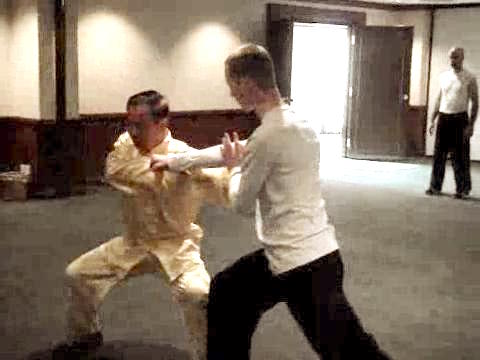
88. The Profundity of Shaolin Combat Application
Why do you show a dragon but hide a tiger, or spin a gold coin on the floor? These are some of the secrets the course participants find out. How would you immobilize a monkey and take him for a walk, and how would the monkey free himself from your grip? Certainly Shaolin patterns are not only poetically named and beautiful to watch, they are also highly effective for combat as well as full of fun.
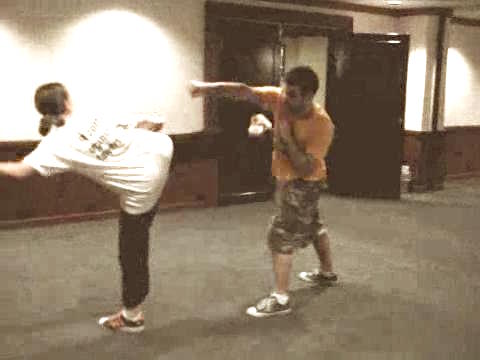
89. It is Easy to Fight against Boxers
Many people find it hard to fight a Boxer because of his fast punches. But it is actually easy to fight a Boxer -- if you know how. A Boxer has very limited techniques, which means not only he is limited in his range of attack, but also if you attack him using techniques outside his repertoire he often does not know what to do. In this video series Molly and Steve show how they can effectively handle Boxers.
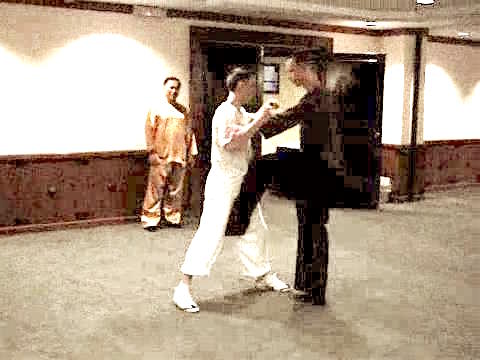
90. Avoiding a Boxer's Strong Points and Attacking his Weaknesses
An excellent combat principle is to avoid an opponent's strong points and attack his weaknesses. A Boxer's strong points are his fast punches and his agility. His weaknesses are many, and can be summarized into his grossly narrow range of techniques for both attack and defence. A Boxer does not know how to kick you, apply locks on you, or fell you onto the ground. If you can successful apply these forms of attack on him, he does not know how to defend himself.
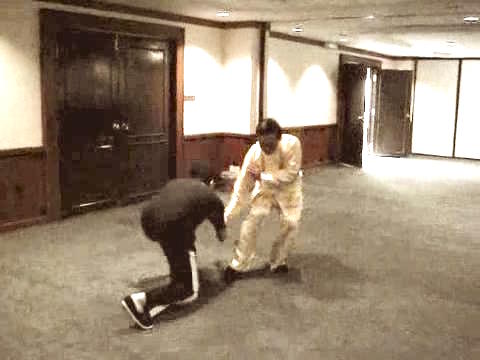
91. Some Effective Tactics against Boxers
There are many effective tactics against Boxers. Can you remember the difference between a tactic and a technique? Closing an opponent so that he can not strike you as you attack him is a tactic. You may do so using a Tiger-Claw or a Taming Hand, both of which are techniques.
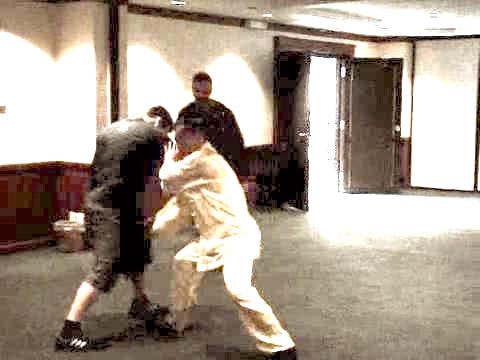
92. The Strategy of Not Allowing an Opponent to Escape
Many martial artists must have experienced the following situation in their free sparring. Their opponent made a wrong move which gave them a good opportunity to defeat him. But they were unprepared. So they missed the opportunity and the opponent escaped. Past masters generalized these situations into a combat principle to help their students not to miss such opportunities. This principle of not allowing an opponent to escape when you have an advantage, is a good strategy to use against Boxers or any combatants.
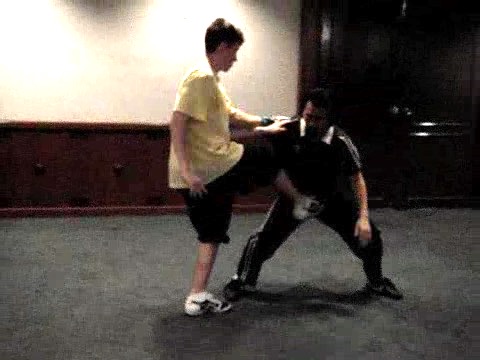
93. The Strategy of Letting Trick Manifesting Trick
When an opponent attempts to use a technique or trick to defeat you, you use his same technique or trick and turn it around to defeat him instead. This strategy is very effective in combat as well as in daily life, and often wins the admiration of your opponents especially if you are magnanimous in victory.
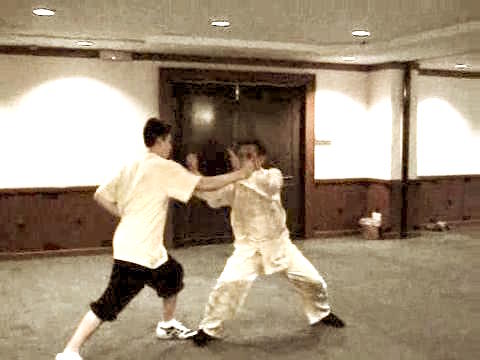
94. The Strategies of Interception and of Striking Form
If you are skilful and forceful, a good tactic or strategy is to intercept a Boxer's attacks and counter-attack. Interception is shown in the first part of this series. In the second partthe strategy of striking form is employed. When a Boxer attacks you, strike his arm. When he retreats, strike his head or body.

95. Standardized Routines of Kick-Boxing Attacks
Some widely used Kick-Boxing attacks are demonstrated in fixed routines. Of course, when Kick-Boxers attack in free sparring or real fighting, they don't do so in fixed routines. But practicing routines instead of randomly saves a lot of time. When we are familiar with the routines, we can systematically release control so that eventually the attacks can be random.
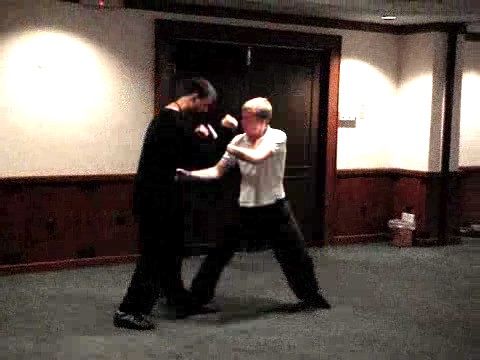
96. Some Effective Counters to Kick-Boxing Attacks
Course participants work out counters against Kick-Boxers according to some standardized routines. Will they be able to apply these counters in free sparring or real fighting which does not follow any pre-arranged routines? Of course, they will if their combat training is systematic and methodological. Working with routines saves a lot of time. When we are familiar with the routines, we must progress to other stages of combat training where controls are gradually released so that eventually we can free spar.
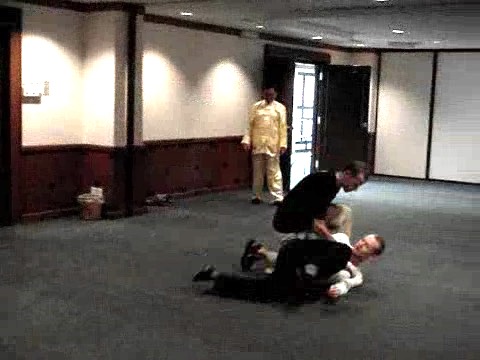
97. Felling a Kick-Boxer when he Kicks
If you move in to fell a Kick-Boxer when he kicks or immediately after he has kicked, he has little or no chance to escape your attack. You must of course close him adequately so that he cannot counter-strike.
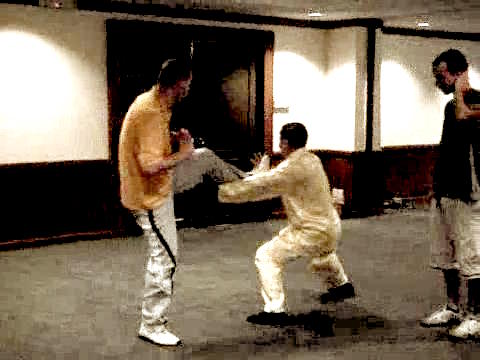
98. The Secrets of Two Tigers Subdue Dragon
In his young days Grandmaster Wong went around looking for Blackbelts to practice free sparring. Taekwondo was very popular at his time, and most of his opponents used kicks very frequently. Grandmaster Wong learned an effective counter against kicks from his master, Sifu Ho Fatt Nam, using the pattern "Two Tigers Subdue Dragon".
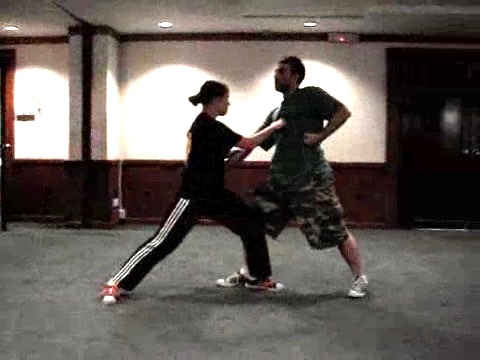
99. Shaolin Counters against Kick-Boxing and Karate
It is easy to bring a Kick-Boxer onto the ground as he kicks. Of course we can also bring him onto the ground when he is not kicking. Two examples are shown in this video series. Some common ways a Karate exponent typically attacks are formalized into sequences. Two effective ways of handling a Karate exponent are shown here.
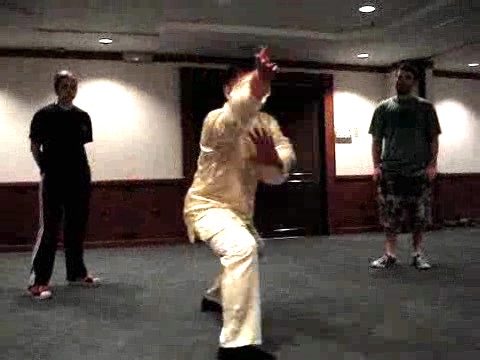
100. Some Important Combat Philosophy and Principles
Some important combat philosophy and principles are explained in this series. While attacks may come in countless way, if he understands combat philosophy and principles, a skillful Shaolin practitioner can prepare himself to handle almost all of them! He should also know how to exploit advantages when they arise and make modifications in his planned sequences according to the changing movements of his opponents.

101. It is Relatively Easy to Handle Karate Attacks
Handling Karate attacks is relatively simple, because Karate attacks and defences are straight-forward. Indeed, if you practice the techniques shown in this video series well, you will have sufficient techniques to handle Karate exponents, including Blackbelts, quite competently. If you can successfully apply some of the felling and chin-na techniques shown in other videos, Karate opponents may not know how to counter your attacks, simply because these counters are not found in their repertoire of techniques.
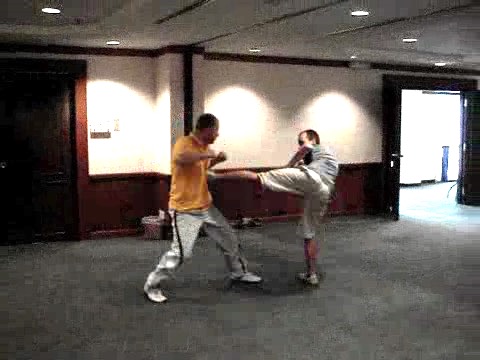
102. Good Spacing When Handling Kicks
Good spacing when executing kicks is explained in this video series. You will also learn how to bridge the gap when your opponent moves back, and how to move in to kick if you have earlier retreated. The difference in reach between a punch and a kick is noted, and an excellent footwork maneuver is explained.
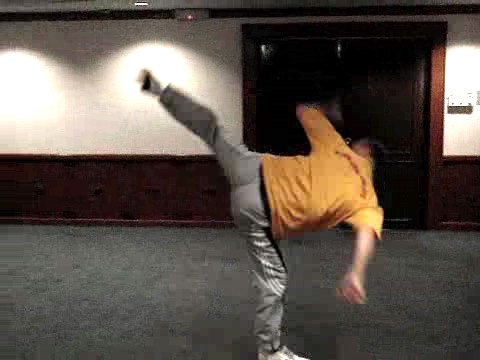
103. A Variety of Taekwondo Kicks
Many martial artists are weary of kicks because they find them long reaching and powerful. But actually it is easy to handle kicks -- if you know how and have the required skills. Taekwondo is famous for kicks. A variety of Taekwondo kicks are shown in this series. Muay Thai kicks are quite different, and will be dealt with later.
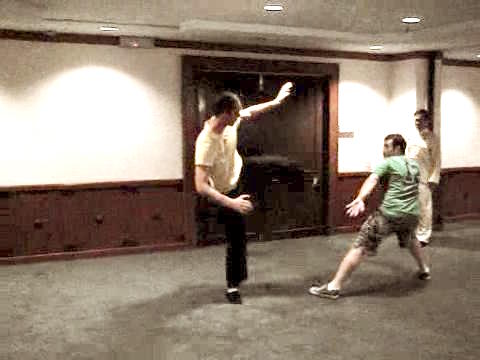
104. Effective Shaolin Counters against Taekwondo Kicks
There are many effective Shaolin counters against Taekwondo kicks. "Tame Tiger with String of Beads" can be used to counter any kicks. "Two Tigers Subdue Dragon" is excellent to trap the leg of a side-kick. When an opponent executes a reverse round-house, you can apply "Double Dragons Cross Step" to strike him often without him knowing.
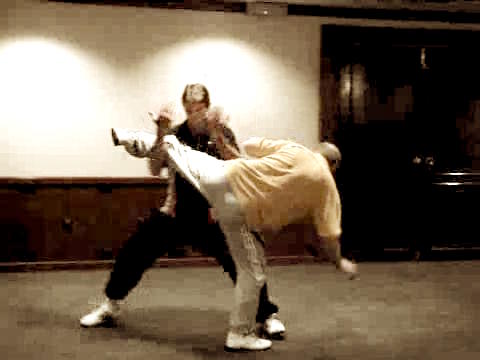
105. Trapping Legs and Subduing Opponents
You can render an opponent quite helpless when he kicks if you can trap his kicking leg and subdue him onto the ground. Some effective techniques for this purpose are shown in this video series. The patterns employed are "Panda Hugs Tree", "Old Monk Clamps Wood" and "Double Dragons Cross Step". Good judgment, good timing and good spacing are necessary.
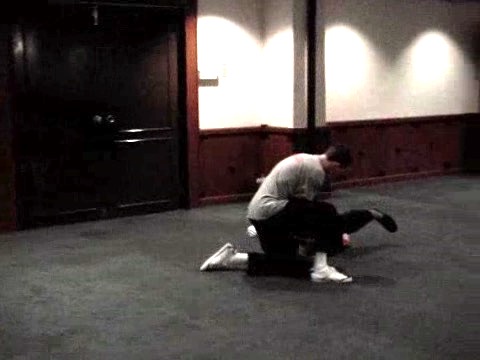
106. Making Expedient Changes to Surprised Attacks
Taekwondo kicks are quite straight-forward, but Muay Thai kicks are tricky. When an opponent executes a right sweeping kick to your left side, you may move to your right side to counter-attack. But a Muay Thai fighter is agile enough to suddenly change his attack and gives you a left sweeping kick. If you are close, he may hold your neck and throw continuous knee jabs at your chest or ribs. How would you counter?
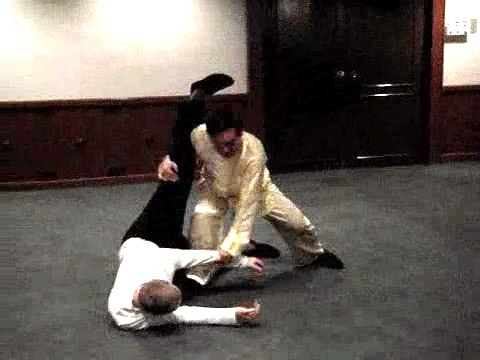
107. The Legacy of Sigung Ho Fatt Nam -- Planting Willow in Front of Camp
How would you counter if you move into a sweeping kick or a knee strike at close quarters? A number of possibilities are suggested. Grandmaster Wong offers the best solution -- the legacy of Sigung Ho Fatt Nam, namely "Planting Willow in Front of Camp".
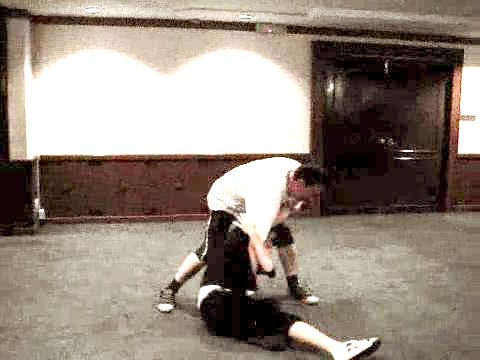
108. Having Fun in Throws and their Counters
Who says there are no throws in Shaolin Kungfu? In fact there are more felling techniques in Shaolin than in all the other martial arts put together! This is not an exaggeration but a true statement, though many Shaolin practitioners today may not know these felling techniques. Chris and Nick, who are expert in throws, demonstrate these attacks and their counters. They also have a lot of fun.
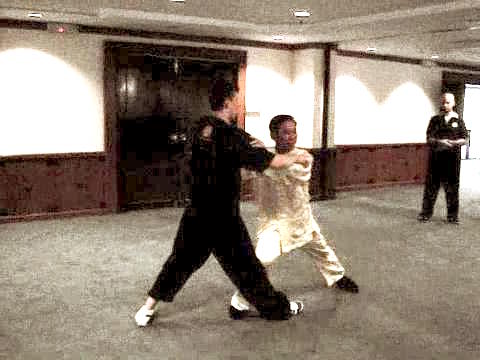
109. Sharing the Secret of Move Stance Change Step
Course participants have a lot of fun trying to throw one another as in Judo. Then they adopt their kungfu stances and feel the difference. Grandmaster Wong shares with them a secret he learned from his master, Sifu Ho Fatt Nam, many years ago, which is "move stance change step". With this secret, opponents find it difficult, if not impossible, to throw you.
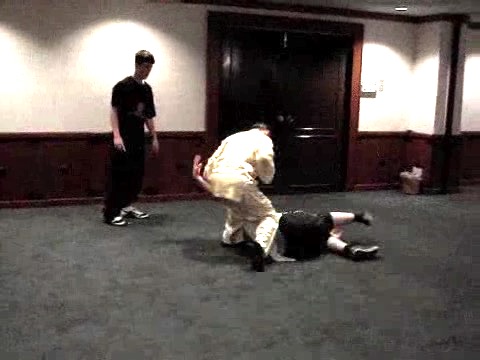
110. Some Unorthodox Felling Techniques Not Commonly Seen
Some people may be annoyed to find Grandmaster Wong saying that there are more felling techniques in Shaolin Kungfu than in all the other martial arts put together. They may be more annoyed, if not puzzled, to know that in Shaolin Kungfu you can fell an opponent without throwing him or without touching him with your hands. You will also learn in this video series how to counter an opponent gripping your two hands and attempting to flick you over his head with his leg.
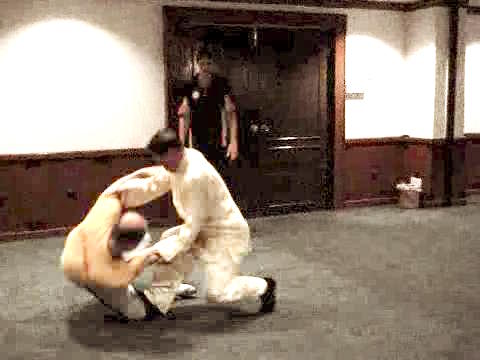
111. Felling Opponents with your Stances
The Unicorn Step is very versatile. Not only you can apply the Unicorn Step to frustrate opponents trying to throw you, but also you can fell them instead. You may also break their knees and ankles if you want to. The Unicorn Step facilitates the rotation of your waist, which enables you to fell opponents heavier and taller than you, often without jostling with them. In Shaolin Kungfu you do not throw your opponents with your hands, you fell them with your stances!
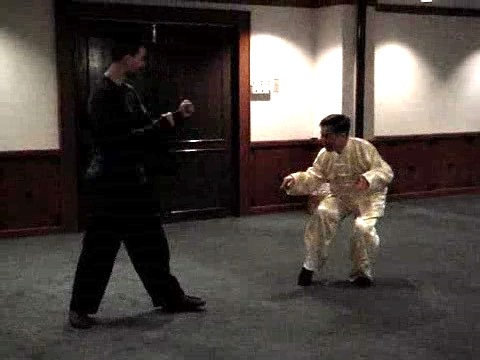
112. Beware of Monkeys; they are Expert at Plucking Peaches
Beware of Monkeys; they are expert at plucking peaches. You can enhances this ability if you know how to trap a kick and make plucking peaches a certainty! Plucking peaches is effective irrespective of the Monkey's size or the opponents' size. Indeed a small Monkey can skillfully control a much larger opponent.
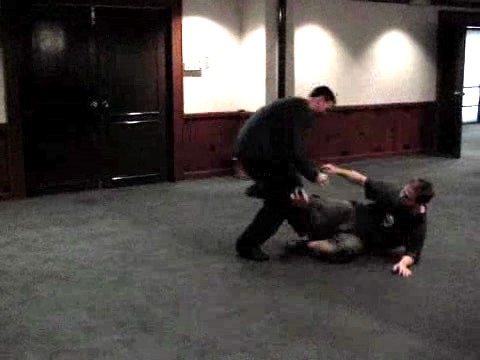
113. Sophisticated Footwork and Leg Techniques of Monkeys and Gorillas
Irrespective of whether they are Monkeys or Gorillas they are not only good at peach plucking, but also at footwork and leg techniques. A skillful Monkey or Gorilla can get you onto the ground and subdue you before you can realize what has happened. Some sophisticated footwork and leg techniques are shown in this video series.
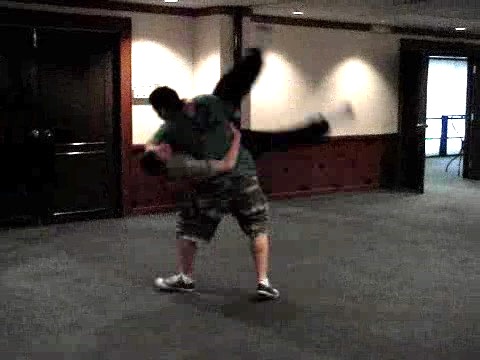
114. Wrestling Throws are Found in Shaolin Kungfu Too
Wrestling throws are found in Shaolin Kungfu too. In fact, they are more sophisticated. Wrestling throws are usually exposed as attackers are protected by safety rules, but Shaolin throws are always covered, with the exponents' safety taking top priority. Some examples of Shaolin throws that are similar to but not quite the same as Wrestling throws are "Angry Bull Charges at Fence", "Jade Belt Surrounds Waist" and "Drunken Man Retains Friend".

115. Real Fighting is Different from Martial Sports
Some people forget that real fighting is different from martial sports. In a martial sport like Judo or Wrestling, an attacker may be exposed while attacking yet he may not be hurt because he is protected by safety rules. But safety rules do not apply in real fighting. As you grab your opponent's legs for a shoot, he may smash your head or gorge out your eyes. As Shaolin disciples we do normally do not use such drastic techniques, but we must be prepared that our opponents may use them.
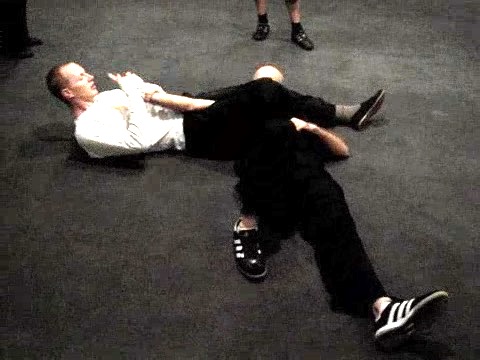
116. Who Says there is no Ground-Fighting in Shaolin Kungfu?
Who says there is no ground-fighting in Shaolin Kungfu? Wrestling techniques to pin opponents onto the ground are also found in Shaolin Kungfu, like "Lohan Worships the Buddha", "Green Frog Crouches on Ground" and "Lazy Man Smokes Pipe". Some incredible secrets to counters such holds are hidden in the open in the video clips. Many people may find it hard to believe, but if you know these secrets and have necessary skills, you can counter any attacks to pin you down.
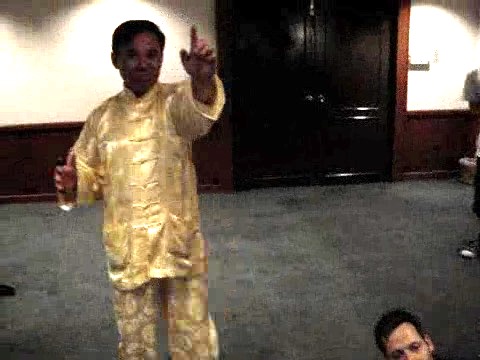
117. An Incredible Secret of One-Finger Zen
Some time ago when Sifu Anthony Korahais mentioned that he would use his Tiger-Claw to counter opponents trying to pin him down, some people laughed in their ignorance. In this video series, you do not even need the five fingers of your Tiger-Claws but just one finger of your One-Finger Zen to counter any attempt to pin you onto the ground! The secrets are hidden in the open. See if you can find them.
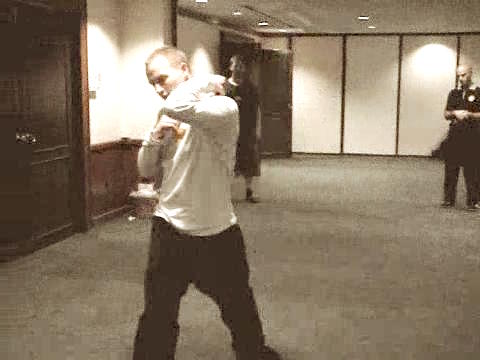
118. Understanding Muay Thai Fighting Strategies and Techniques
Muay Thai fighters always attack in a series. In other words, they do not attack once, then think of a second attack, which is what many martial artists do and which makes them hesitant and slow. To be able to counter Muay Thai fighters more effectively, it is necessary to know the attack sequences they commonly use. Sifu Roland demonstrates five Muay Tahi attack sequences, and Peter demonstrates four.

119. Various Strategies to Counter Muay Thai Fighters
Understanding that Muay Thai fighters usually attack in a series of three is a great help in preparing how to counter them. There are various strategies we can use. One strategy is to let him complete his series of attacks, then counter-attack him before he starts another series. Another strategy is is to intercept him half way and counter-attack. A third strategy is to counter-strike as soon as he attacks.
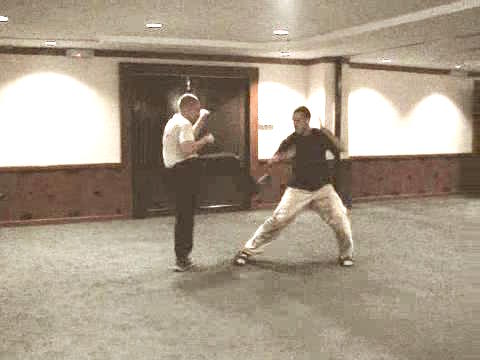
120. Responding to Muay Thai Attacks Spontaneously and Correctly
If a Muay Thai fighter, or any attacker, uses a sequence which you have prepared yourself for, you can counter effectively. But would you be able to do this if he attacks you at random? Yes, if you are proficient in countering some common attack sequences. As Muay Thai attacking techniques are relatively limited in number, even if the attacks are random, they are usually modifications from the few common sequences.
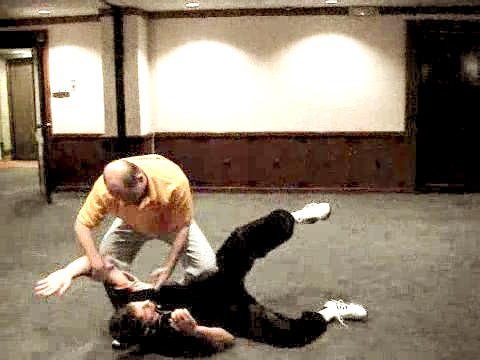
121. Avoiding Opponent's Strength and Attacking his Weakness
Avoiding an opponent's strength and attacking his weakness is an important principle in combat. The strength of a Muay Thai fighter lies in his fast, powerful kicks and elbow strikes, and his weakness is his lack of solid stances. Hence, a good tactic is to let his elbow strikes and kicks pass, instead of blocking them, and counter-strike. Then fell him onto the ground to subdue him.
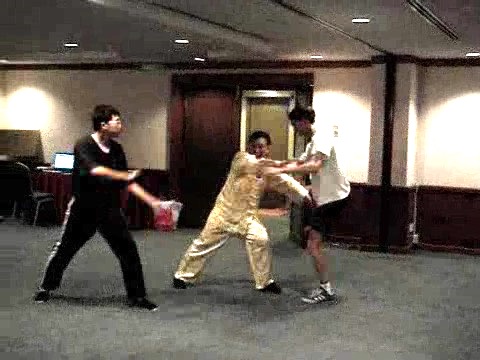
122. Effective Ways to Counter Sweeping Kicks
Muay Thai sweeping kicks are formidable to many people. As these kicks are very powerful, blocking them may result in the defenders' arm being broken. But there are effective ways to stop these kicks, if you know how. One effective method is to intercept the kicks. Another effective method is to stay close to the Muay Thai fighter so that he cannot kick effectively.
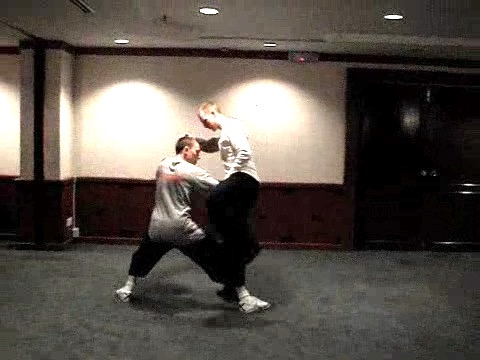
123. Effective Counters against Knee and Elbow Strikes
Muay Thai is well known for its knee and elbow strikes. These attacks are even more formidable when a Muay Thai fighter holds your neck down while kneeing or elbowing you. Some effective counters are explained in this video series.
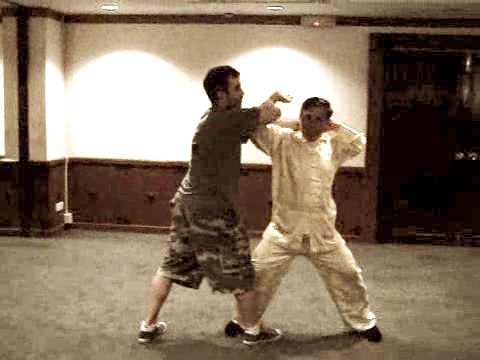
124. Crouching Tiger against Grab Neck Elbow Strike
A deadly and seemingly impossible attack to counter is when a Muay Thai fighter grabs your head close to him and strikes you with his elbow. A skilful Muay Thai fighter may feint some initial attacks to get close enough to execute this formidable attack. An effective counter is "Fierce Tiger Crouching at Cliff", which interestingly looks like a decorative pattern without combat function!

125. Shaolin Kungfu for Combat Efficiency, Good Health and Spiritual Development
We are happy and proud that in our school we practice kungfu for combat efficiency as well as good health and spiritual development. These three integrated aspects are highlighted in the completion of this Special Shaolin Kungfu Course. After free sparring using Shaolin patterns, course participants enjoy a vigorous chi flow which promote health, and conclude with Standing Meditation where may of them experience spiritual joys.
LINKS
How to Think and Act as a Master
- Returning to the Basics
- Form, Force, Flow and Element of Threat
- Reviewing the Basic Combat Sequences
- Devising Strategies Using Combat Sequences
- Applying Strategies for Effective Combat
- Free Sparring with Prescribed Conditions
- Combat Sequences to Train Spontaneous Attacks and Responses
- Using Strategies and Tactics in Attack and Defence
- It is Heartening to see so Many People Using Kungfu in Free Sparring
- Felling and Gripping Techniques in Shaolin Kungfu
- How Sequence Training and Chi Flow Enhance Combat Efficiency
- The Tiger-Crane Set — Manifesting the Hard and the Soft in Shaolin Kungfu
- The Dragon-Tiger Set — Crystallization of Two Wahnam Traditions
- The Dragon-Form Set — Demonstrating that Softness Can be Very Powerful
- Shaolin Monkey Set — Symbolizing Spiritual Path from Cheekiness to Enlightenment
- Shaolin Five-Animal Set — Gist of Shaolin Forms and Essence
- Shaolin Pakua Set Set — An Exclusive Set Fit for Kings and Generals
- Combat Application of Pakua — Sharing Secrets for Combat Efficiency
- Beginning to Learn some Monkey Tricks
- Refining Techniques in Combat
- Some Examples of High level Combat
- Collective Effort for Greater Benefits
- Can Sophisticated Kungfu Techniques be Used in Combat?
- Skills are usually More Important than Techniques
- One-Finger Shooting Zen — the Treasure of Shaolin Wahnam
- Raising Levels of Techniques and Tactics in Combat
- Bringing Combat Skills to More Sophisticated Levels
- Monkey Techniques are Flowing and Agile but can be Very Devastating
- Flowing with the Opponent's Momentum
- Beware of the Monkey Tricks
- Marvelous Techniques Beget Marvelous Techniques
- How to Raise your Level of Combat
- How you can Defeat your Opponents
- Employing Sophisticated Kungfu Techniques to Enhance Combat Efficiency
- Systematic Training is Essential for Combat Efficiency
- Raising Combat Efficiency from Basic to Advanced Levels
- Kungfu Philosophy and Swaying Willows
- Hands Pave the Way, Kicks to Clinch Victory
- Six Harmonies of the Double Tiger Claws
- The Amazement and Effectiveness of Monkey Kicks
- A Bag Full of Monkey Tricks
- Gentle and Flowing, yet Very Powerful
- Can your Responses still be Correct and Spontaneous in Real Fights?
- Incorporating Kicks into Combat Sequences
- Elaborate Patterns to Meet Complex Combat Situations
- The Benefits of Understanding and Applying Kungfu Philosophy
- Our Kungfu is a Training of Energy and Mind
- Ensuring Own Safety when Felling Opponents
- The Beauty and Profundity of Shaolin Felling Techniques
- Felling Techniques of the Dragon and the Monkey
- Felling an Opponent Without him Realizing What has Happened
- Pattern Analysis of the Tiger-Crane Set
- Tiger Patterns for Chin-Na, Against Kicks and Countering the Shoot
- Pattern Analysis of the Dragon-Tiger Set
- Revealing the Secret Tactic of Leak Hand
- From the Level of Techniques to the Levels of Tactics and Strategies
- Pattern Analysis of the Dragon-Form Set
- Effective Techniques for Fighting on the Ground
- Pattern Analysis of the Monkey Set
- Soft Techniques and Internal Force in Monkey Kungfu
- Interesting Monkey Patterns that are Deadly for Combat
- Pattern Analysis of the Pakua Set
- Pattern Analysis of the Five-Animal Set
- Variety of Techniques in Shaolin Five Animals
- Investigating the Combat Applications of Some Patterns
- Similar Patterns but Different Applications
- Effective Counters against Kicks, Grips and Knee Jabs
- Secrets of Skyward Cannon Punch in Continuous Attack
- Cannon Punch Towards Sky and Fierce Tiger Crouching on Ground
- Flowing Monkey Techniques against Powerful Tiger Claws
- Sophisticated Grips and Sophisticated Counters
- Breaking an Opponent's Elbow and Wrist
- Neutralizing Wrist Lock and the Three Harmonies
- Advanced Chin-Na Techniques and Counters
- Two Stories about Kicks
- How to Respond to Attacks Spontaneously and Correctly
- Can Beautiful Patterns and Flowing Movements be Effective in Combat?
- Linking Combat Sequences into a Set
- From Pre-Arranged Sparring to Combat Efficiency
- Crystalization of Combat Techniques from Past Masters
- Hei Sai or the Spirit of Energy
- Manifesting the Energy and Spirit of your Form
- Manifesting the Inner Essence of your Form
- Kungfu Practice is not just Physical Training but also Spiritual Cultivation
- Fluidity of Form, Energy and Spirit
- Shaolin Kungfu is Chi Kung and Meditation
- Revealing the Secrets of Shaolin Masters
- The Profundity of Shaolin Combat Application
- It is Easy to Fight against Boxers
- Avoiding a Boxer's Strong Points and Attacking his Weaknesses
- Some Effective Tactics against Boxers
- The Strategy of Not Allowing an Opponent to Escape
- The Strategy of Letting Trick Manifesting Trick
- The Strategies of Interception and of Striking Form
- Standardized Routines of Kick-Boxing Attacks
- Some Effective Counters to Kick-Boxing Attacks
- Felling a Kick-Boxer when he Kicks
- The Secrets of Two Tigers Subdue Dragon
- Shaolin Counters against Kick-Boxing and Karate
- Some Important Combat Philosophy and Principles
- It is Relatively Easy to Handle Karate Attacks
- Good Spacing When Executing Kicks
- A Variety of Taekwondo Kicks
- Effective Shaolin Counters against Taikwondo Kicks
- Trapping Legs and Subduing Opponents
- Making Expedient Changes to Surprised Attacks
- The Legacy of Sigung Ho Fatt Nam — Planting Willow in Front of Camp
- Having Fun in Throws and their Counters
- Sharing the Secret of Move Stance Change Step
- Some Unorthodox Felling Techniques Not Commonly Seen
- Felling Opponents with your Stances!
- Beware of Monkeys; they are Expert at Plucking Peaches
- Sophisticated Footwork and Leg Techniques of Monkeys and Gorillas
- Wrestling Throws are Found in Shaolin Kungfu Too
- Real Fighting is Different from Martial Sports
- Who Says there is no Ground-Fighting in Shaolin Kungfu
- An Incredible Secret of One-Finger Zen
- Understanding Muay Thai Fighting Strategies and Techniques
- Various Strategies to Counter Muay Thai Fighters
- Responding to Muay Thai Attacks Spontaneously and Correctly
- Avoiding Opponent's Strength and Attacking his Weakness
- Effective Ways to Counter Sweeping Kicks
- Effective Counters against Knee and Elbow Strikes
- Crouching Tiger against Grab Neck Elbow Strike
- Shaolin Kungfu for Combat Efficiency, Good Health and Spiritual Development
